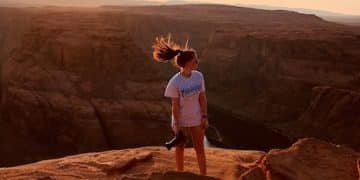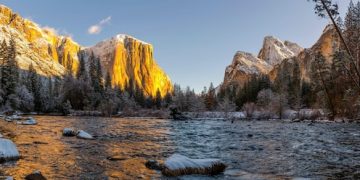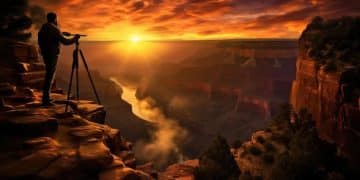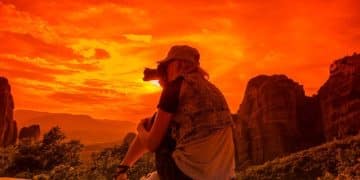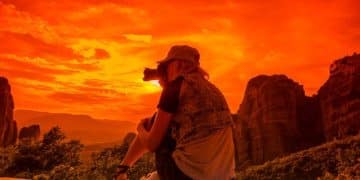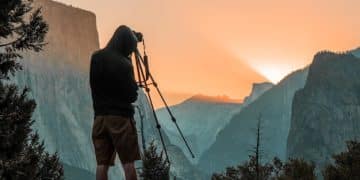Master Travel Videography: 4-Week Intensive Course
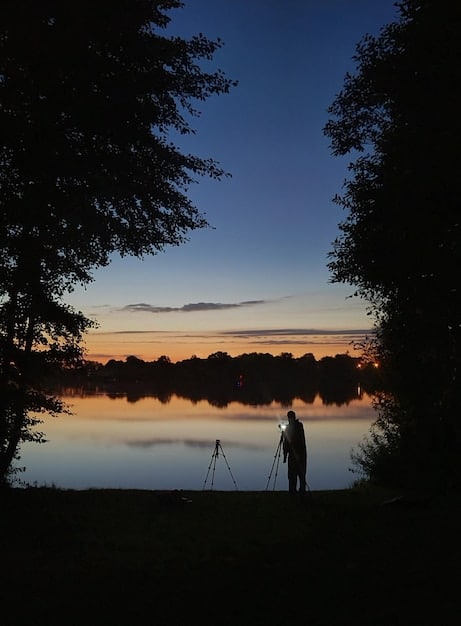
This comprehensive 4-week intensive course is designed to empower aspiring and intermediate travel videographers with the skills and knowledge needed to capture stunning, professional-quality footage, transforming their travel experiences into compelling visual stories.
Embarking on a journey to truly capture the essence of your adventures through captivating video requires more than just a camera; it demands a blend of technical prowess, creative vision, and storytelling acumen. This is precisely what the Unlock Expert-Level Travel Videography: A 4-Week Intensive Course for Capturing Stunning Footage aims to deliver, guiding you from novice to a skilled visual storyteller.
the fundamentals: gear, settings, and pre-production
Diving into travel videography starts with understanding your tools and planning your shots. Many believe expensive gear is the key, but mastering what you have is far more crucial. This section lays the groundwork, ensuring you’re prepared long before you hit record.
Choosing the right equipment can feel overwhelming. While a high-end cinema camera might be aspirational, a modern smartphone or a mirrorless camera can achieve remarkable results. Focus on portability and versatility. Accessories like a sturdy tripod, external microphone, and extra batteries are often more impactful than the camera body itself.
understanding your camera’s potential
Navigating camera settings is paramount. Shutter speed, aperture, and ISO aren’t just technical terms; they are creative controls. Learning to manipulate these allows you to control exposure, depth of field, and motion blur, shaping the mood and visual quality of your footage. Dynamic range, often overlooked, determines how well your camera captures detail in both shadows and highlights, crucial for challenging travel scenarios.
- Shutter Speed: Aim for double your frame rate (e.g., 1/50 for 25fps) for natural motion blur.
- Aperture (f-stop): Controls depth of field and light; lower numbers mean more blur and more light.
- ISO: Adjusts sensitivity to light; keep it as low as possible to minimize noise.
- White Balance: Ensures accurate color representation, vital for consistent footage.
Pre-production is the unsung hero of successful videography. This involves more than just packing your bags. Researching your destination, identifying key locations, and even scouting shot angles can save valuable time and prevent missed opportunities. Storyboarding, even informally, helps visualize your narrative and plan transitions, ensuring a cohesive final product.
Consider the logistical challenges: lighting conditions, crowd control, and local regulations. A well-prepared videographer anticipates these hurdles, allowing them to adapt and capture compelling footage despite unforeseen circumstances. This foundational week sets the stage for a journey of visual storytelling, transforming mere recordings into impactful narratives.
mastering composition and storytelling techniques
Beyond technical settings, the art of travel videography lies in how you frame your shots and weave them into a compelling story. This week delves into the visual language of filmmaking, teaching you to see the world through a storyteller’s lens.
Composition is critical for aesthetics and narrative clarity. The rule of thirds, leading lines, and framing are foundational principles that guide the viewer’s eye and create visual interest. However, true mastery involves knowing when to break these rules for dramatic effect. Understanding negative space and focal points transforms an ordinary scene into a captivating visual.
dynamic camera movements and angles
Static shots can be dull. Incorporating dynamic camera movements – smooth pans, tilts, dollies, and slides – adds energy and professionalism to your footage. Each movement serves a purpose, whether it’s revealing a landscape, following a subject, or building suspense. Handheld footage can convey authenticity, but only when executed with stability and intention, often using image stabilization in camera or post.
- Establishing Shots: Wide shots that set the scene and context.
- Tracking Shots: Following a subject to convey movement and perspective.
- Point-of-View (POV): Immersing the viewer directly into the experience.
- Close-ups: Capturing detail and emotion, adding intimacy to the story.
Storytelling is the heart of travel videography. It’s not just about what you show, but how you show it. Crafting a narrative arc, even a simple one, elevates your videos from a collection of clips to a cohesive journey. This involves identifying a theme, building tension, introducing characters (even if they are just local faces), and delivering a satisfying resolution.
Interviewing locals can add authentic voices and perspectives, enriching your narrative. Planning your shots around these narrative elements ensures that every frame contributes to the overall story, making your travel videos resonate deeply with your audience. Effective storytelling ensures your audience not only watches but feels connected to your adventure.
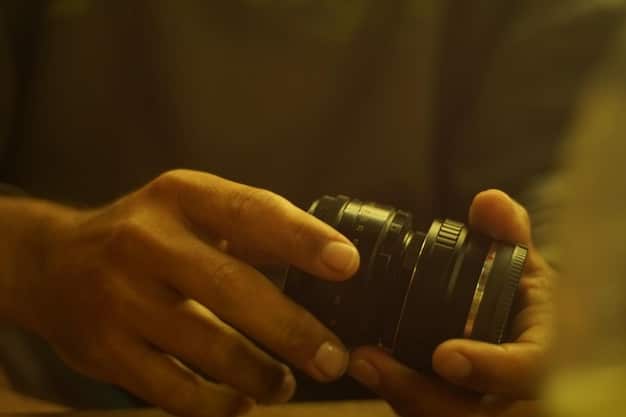
advanced lighting and audio for cinematic appeal
Even the most stunning visuals can be ruined by poor lighting or distorted audio. This week elevates your footage by focusing on these often-overlooked yet critical elements, transforming good shots into truly cinematic experiences.
Natural light is your best friend in travel videography. Learning to read the light—understanding the “golden hour,” the harshness of midday sun, and the softness of overcast skies—allows you to schedule your shoots strategically. Diffusers and reflectors can manipulate natural light, softening shadows or bouncing light into dark areas, creating balanced and aesthetically pleasing scenes.
shaping light for mood and clarity
When natural light isn’t sufficient, artificial lighting comes into play. Portable LED panels are invaluable for adding fill light or illuminating subjects in challenging conditions. Understanding three-point lighting (key, fill, and back light) provides a framework for professional setups, even in run-and-gun travel scenarios. Gel filters can change the color temperature of your lights, matching them to ambient conditions or creating specific moods.
- Golden Hour: Warm, soft light ideal for stunning landscapes and portraits.
- Blue Hour: Deep, moody light perfect for cityscapes and subtle transitions.
- Overcast Days: Natural diffusion, providing soft, even lighting.
- Midday Sun: Harsh shadows; best avoided or supplemented with fill light.
Audio often determines the perceived quality of a video more than visuals. Poor audio is jarring and immediately detracts from the experience. While built-in camera microphones are great for scratch audio, external microphones are essential for clear, professional sound. Lavalier microphones are excellent for interviews, capturing clean dialogue, while shotgun microphones are ideal for ambient sounds and specific sound sources, isolating them effectively.
Beyond capturing good audio, managing it in the field is vital. Monitoring audio with headphones ensures that you catch buzzing, wind noise, or distortion before it’s too late. Wind shields are non-negotiable for outdoor recording. Thinking about the soundscape of your video—background music, natural sounds, and dialogue—enhances immersion and emotional impact, making your travel films truly resonate.
the art of editing for impact and flow
Raw footage is just the beginning. The editing suite is where your story truly comes alive. This week focuses on transforming hours of clips into a polished, compelling narrative that captivates your audience.
Selecting the right software is the first step. Adobe Premiere Pro, DaVinci Resolve, or Final Cut Pro are industry standards, each offering robust tools for professional editing. Understanding the interface, timeline, and basic shortcuts dramatically speeds up your workflow. The goal is to create a seamless flow, where each shot transitions smoothly into the next, maintaining viewer engagement.
crafting the narrative arc in post-production
Editing is a iterative process. Start with a rough cut, assembling your best takes in logical sequence. Then, refine it, trimming unnecessary footage and focusing on pacing. Pace dictates the emotional rhythm of your video; a fast pace builds excitement, while a slower pace evokes reflection. The goal is to maintain viewer interest, preventing any dull moments.
- Jump Cuts: Quick transitions to maintain momentum or convey passage of time.
- L-Cuts/J-Cuts: Audio from one clip bleeding into the next for seamless transitions.
- Match Cuts: Connecting two seemingly disparate shots through visual similarity.
- Montages: A rapid succession of short clips to convey information or emotions efficiently.
Color grading and correction are vital for cinematic appeal. Color correction balances your footage—adjusting white balance, exposure, and contrast—to ensure consistency across all clips. Color grading, on the other hand, is an artistic choice, setting the mood and visual style of your film. This can range from vibrant and punchy to muted and melancholic.
Sound design elevates your video significantly. Beyond dialogue, adding ambient sounds, sound effects, and carefully selected background music creates depth and atmosphere. Music should enhance, not overpower, your visuals, guiding the emotional journey of the viewer. Mastering these post-production techniques allows you to refine your vision and produce a truly professional-grade travel film.

distribution and audience engagement: sharing your story
Creating stunning travel videos is only half the journey; sharing them effectively is crucial to reaching your audience and making an impact. This final week focuses on optimizing your videos for various platforms and building an engaged community.
The first step in distribution is understanding your platform. YouTube, Vimeo, Instagram, and TikTok each have unique best practices for aspect ratios, video length, and audience demographics. Optimizing your video’s resolution, frame rate, and compression ensures the highest quality playback across devices, catering to diverse viewing environments.
optimizing for visibility and virality
Search Engine Optimization (SEO) isn’t just for text; it’s vital for video discoverability. Crafting compelling titles, detailed descriptions with relevant keywords, and engaging thumbnails are paramount for attracting clicks. Tags, while sometimes overlooked, can significantly extend your video’s reach, connecting it with related content and broader search terms.
- Compelling Thumbnails: Your video’s billboard; make it visually appealing and informative.
- Keyword-Rich Titles: Include relevant terms that potential viewers might search for.
- Detailed Descriptions: Provide context, links, and additional keywords to aid discovery.
- Strategic Tagging: Use a mix of broad and specific tags to broaden reach.
Engagement strategies move beyond mere views. Encouraging comments, questions, and shares fosters a community around your content. Responding to comments, even critical ones, builds rapport and shows you value your audience’s input. Live Q&A sessions or behind-the-scenes content can further deepen engagement, making your audience feel more connected to your creative process and your travels.
Promoting your videos goes beyond organic reach. Leveraging social media channels, collaborating with other creators, and even short paid promotions can boost visibility. Understanding analytics—who is watching, how long they watch, and where they drop off—provides invaluable insights for refining your content strategy. This enables you to continually improve your videos and better serve your audience, turning viewers into loyal followers and brand ambassadors.
building a travel videography brand
Beyond individual videos, creating a cohesive brand transforms your work from a hobby into a recognizable presence. This section explores strategies for developing a distinct style, attracting collaborations, and potentially monetizing your passion.
Your unique style is your signature. It encompasses everything from your visual aesthetic (color grading, shot types) to your narrative approach (humorous, introspective, adventurous). Consistency in your brand messaging across all platforms—from your video intros to your social media posts—reinforces your identity and makes you memorable. Authenticity resonates deeply with audiences, so let your genuine personality shine through.
monetization and professional growth
Monetization avenues for travel videographers are diverse. Ad revenue from platforms like YouTube is a common starting point, but sponsorships, brand collaborations, and selling stock footage offer more substantial income streams. Creating online courses or selling presets can also leverage your expertise. Diversifying your income sources provides stability and allows you to reinvest in better equipment or more ambitious projects.
- Sponsorships: Partnering with brands whose products or services align with your content.
- Affiliate Marketing: Promoting products you genuinely use and earning a commission on sales.
- Stock Footage Sales: Licensing your high-quality B-roll footage to other creators or businesses.
- Client Work: Offering videography services for travel agencies, hotels, or destination marketing organizations.
Networking and collaborations are powerful growth engines. Connecting with other videographers, photographers, and travel influencers can lead to joint projects, broader exposure, and shared learning opportunities. Attending industry events, both online and in-person, provides invaluable chances to forge relationships and stay abreast of new trends and technologies.
Feedback, both positive and constructive, is fundamental to growth. Actively seeking critiques from peers and paying attention to audience comments can pinpoint areas for improvement. Continuously refining your skills, adapting to new technologies, and staying curious will ensure sustained success and keep your creative spark alive in the dynamic world of travel videography.
ethical considerations and sustainable practices
As travel videographers, we hold a powerful tool for cultural interpretation and environmental awareness. This section delves into the ethical responsibilities and sustainable practices inherent in capturing and sharing stories from around the globe, ensuring our impact is positive and respectful.
Respect for local cultures is paramount. This means more than just adhering to laws; it involves understanding local customs, traditions, and taboos. Always seek permission before filming individuals, especially in sensitive contexts. Be mindful of how your presence affects local communities and strive to portray them authentically, avoiding stereotypes or exploitative narratives. Engaging with locals respectfully enriches your storytelling and builds bridges, not barriers.
minimizing environmental footprint
Travel inherently impacts the environment. As videographers, we have a responsibility to minimize our ecological footprint. This includes practicing “leave no trace” principles in natural environments, disposing of waste properly, and conserving resources wherever possible. Choosing eco-friendly travel options, such as public transport or carbon-offsetting flights, can further reduce your impact.
- “Leave No Trace” Principles: Pack out what you pack in, respect wildlife, minimize impact.
- Support Local Economies: Choose local businesses, guides, and accommodation.
- Be Mindful of Resources: Conserve water and electricity during your travels.
- Ethical Wildlife Encounters: Never disturb or feed wild animals for a shot.
Accurate representation is a journalistic imperative. Avoid sensationalizing poverty or pristine environments for dramatic effect. Instead, aim to tell nuanced stories that reflect the complexities of the places you visit. Fact-check any information you present and be transparent about your observations, ensuring your audience receives an honest and balanced perspective.
Finally, consider the power of your platform for advocacy. Your videos can raise awareness about conservation efforts, social issues, or cultural preservation. Using your voice responsibly to champion causes you believe in adds profound meaning to your work, transforming travel videography into a force for positive change in the world.
| Key Aspect | Brief Description |
|---|---|
| 🎥 Gear & Prep | Master camera settings and pre-production planning for optimal results. |
| 🎞️ Storytelling | Learn compelling composition, dynamic movements, and narrative construction. |
| 💡 Audio/Light | Boost cinematic appeal with advanced lighting and clear audio techniques. |
| ✂️ Editing & Dist. | Polish footage and optimize for maximum audience engagement across platforms. |
frequently asked questions
▼
While a mirrorless or DSLR camera with video capabilities is recommended, the course emphasizes maximizing any gear you have. Even a modern smartphone can be effective for beginners. Essential accessories like a tripod, external microphone, and extra batteries will significantly enhance your learning and output.
▼
No prior experience is strictly required. This intensive course is designed to cater to both aspiring videographers starting from scratch and those with some basic knowledge looking to elevate their skills. The foundational week covers all necessary entry-level concepts, building up to advanced techniques.
▼
Each week focuses on distinct modules: Week 1 covers gear and pre-production; Week 2 delves into composition and storytelling; Week 3 focuses on advanced lighting and audio; and Week 4 is dedicated to editing, distribution, and building your brand. Each week combines theoretical knowledge with practical application.
▼
While the course covers universal editing principles and workflows, it doesn’t limit itself to one specific software. We discuss the best practices applicable to professional-grade software like Adobe Premiere Pro, DaVinci Resolve, or Final Cut Pro, empowering you to apply these skills regardless of your preferred tool.
▼
Upon completion, you will be equipped to create high-quality, cinematic travel videos that effectively capture and tell compelling stories. This includes everything from short social media clips to longer form travel diaries and promotional content for destinations, all with a professional visual and auditory appeal.
conclusion
The journey to mastering travel videography is a fusion of technical understanding, creative expression, and dedicated practice. The “Unlock Expert-Level Travel Videography: A 4-Week Intensive Course” is more than just a series of lessons; it’s a transformative experience designed to equip you with the knowledge and confidence to tell your travel stories with unparalleled visual flair and emotional depth. By embracing the principles of effective storytelling, precise technical execution, and ethical engagement, you are not just capturing footage—you are preserving moments, sharing perspectives, and inspiring others to see the world through a new, more vibrant lens. Your next adventure awaits, ready to be immortalized through your newfound expert videography skills.
